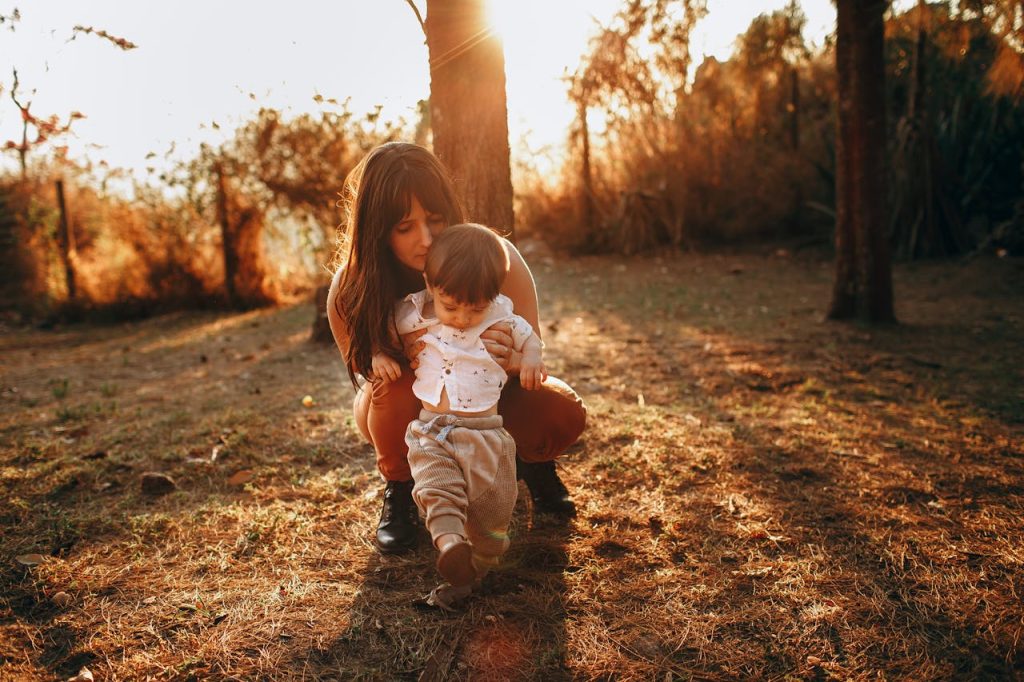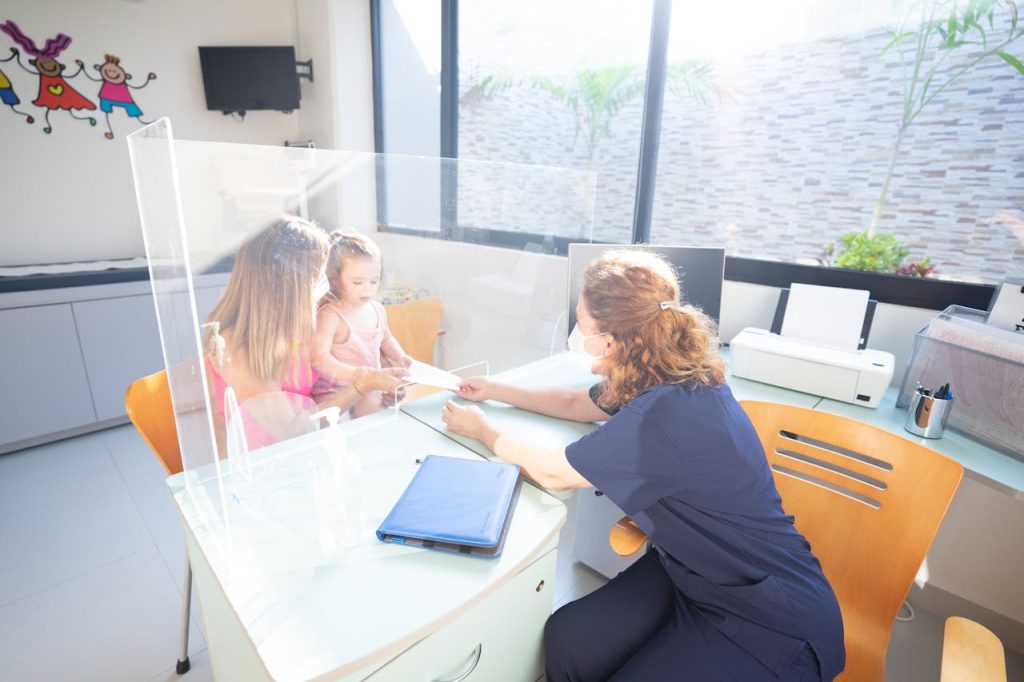How to Encourage Baby to Walk? A child’s first walk is an unprecedented and joyful moment. It is not only an important event for the family, but also a special achievement for the child. When your child starts walking, you can be fairly confident that there are no physical problems. However, many parents don’t know how to encourage their child to walk. If the child learns to walk on their own and follows a few tips, they will likely learn to walk faster than others. In this article, we will discuss how to prepare your child for walking. We will cover in detail the things you need to keep in mind to start the walking process. Additionally, as a bonus, we will explore why walking is important and whether walking affects sleep.
When your baby starts walking
Do you want to get a complete idea of how to encourage baby to walk? If so, you should know a few things before your baby starts walking. Babies usually begin walking between the ages of 10 and 18 months. However, there are several things to consider. Remember, not all babies achieve milestones at the same time. Some may learn to walk earlier or later than the 10 to 18-month range. It may take some time for them to learn, but be patient and provide the right support. This ensures their growth with the right guidance.
Before taking their first steps, babies typically acquire other physical skills. What are these skills? They learn to crawl, sit, and stand, among others. The important thing to note is that the time it takes for each baby to walk can vary, as many studies show. If you want to help them prepare for their first steps, you need to understand some key factors.

Walking stages for babies
According to special research, you won’t get the right information about how to encourage baby to walk unless you understand the steps of walking. The process of learning to walk for children happens gradually. You must accept that nothing is achieved without patience. It takes some time, but with the right support and encouragement, they will successfully learn to walk. Let’s analyze this topic further and explain what you can do to help.
1. Standing
First, babies will try to stand in order to strengthen their legs. This helps build their balance and leg strength. Standing is the first step in learning to walk.
2. Cruising
They will then learn to walk while holding onto the side of furniture. This will further strengthen their legs and gradually prepare them for independent walking. At this stage, they will have made significant progress in learning to walk.
3. First barefoot walk
The baby will take their first steps one at a time. It may be awkward at first, but gradually they will be able to walk upright. Remember, once they are upright, they will no longer feel awkward.
4. Full walk
Your baby will definitely learn to walk. However, they will need to go through many steps. We want to remind you not to rush, as with time, your baby will learn to walk completely.

How to encourage baby to walk: Important ways
Now, let’s get to the main point: some effective ways to encourage your child to walk. Here, we have shared methods that won’t be difficult for you to do and won’t cost any money. We have analyzed expert opinions and research to provide ways that will not harm your child. However, you will need to spend some time and effort to encourage your child to walk. Are you willing to invest the time and work hard? If so, then learn these methods and start implementing them today.
1. Strengthen the baby’s leg muscles
No matter how much you or your child walks, is it possible to walk without legs? Of course not, because legs are needed for walking just as hands are needed for eating. To increase the strength of their legs for walking, you need to gradually strengthen them. Here are some tricks you can follow: Encourage them to straighten their legs and stand. Regularly stretching and keeping their legs straight helps strengthen their leg muscles.
2. Place some favorite toys in front
Here, you may need to spend a little money. I assume you love your baby a lot and have already bought some toys. To encourage your baby to walk, place their favorite toys in front of them to tempt them to move forward. This will create excitement and enthusiasm for movement.
3. Teach social walking
Many studies have shown that children tend to imitate their parents’ behavior. Do you believe this? Yes, you should! Children observe what you do and try to do the same. When walking with family members, allow them to watch and create a social environment that encourages them. This will boost your child’s enthusiasm. It’s a great opportunity to teach them to walk together.
4.Give the right environment
A good environment greatly influences both us and our children. When a person is in a positive environment, you will notice changes in them. Create a safe and clean space where your child can walk comfortably. This will help them feel more secure. If the floor of your house is not smooth, provide them with a safe area to practice walking.
5.Be patient
Nothing can be achieved without patience, so you need to be patient. Give your child the time they need and teach them to walk gradually without any pressure. If you rush too much, the results may be the opposite. Never put extra pressure on them, as every child learns to walk at their own pace.
6.Use music or songs
Music and songs can instantly excite people. Babies also need some excitement to learn to walk, so using music or songs can be helpful. Some babies even learn to walk with the rhythm of music. You can create a special walking time by playing their favorite songs, encouraging them to try walking with interest.
7. Supervised walking
As a child, I can say that my parents have given me a lot of support in life. In fact, that’s the nature of a parent’s love. In the beginning, you can help your child walk by standing beside them and providing proper support, allowing them to walk with confidence and joy. Gradually, their self-confidence will grow, and they will be able to walk on their own.
8. Do special exercises to increase leg strength
Remember, I’m not talking about the kind of exercise adults do. Exercise for children is definitely different from that for adults. You can try special exercises to strengthen your child’s leg muscles for walking. Practicing lifting their legs and taking small steps will help build leg strength. If your child doesn’t have enough strength in their legs, they won’t be able to take steps.
9. Develop the habit of walking on flat surfaces
A flat surface is very important for walking, whether indoors or outdoors. Walking on an unsafe or uneven surface can create fear in children, reducing their interest in walking. Remember, we should never do anything that makes them feel afraid.
Baby walking style
Many parents are eager to know one thing—how their baby will walk. When babies learn to walk, each baby’s walking style is different. There is no reason to worry about this, as it is completely normal and will improve with time. Additionally, a baby’s walking style depends on their physical strength, body structure, and habits. Walking styles can vary greatly—let’s explore them.
🏃 1. Toddling
Your baby’s first step in walking is toddling. They learn to balance and may fall over and over again. There is nothing to be afraid of. With enough time and practice, their leg muscles will become stronger. So, be patient and give your baby the time they need to learn to walk.
🦆 2. Duck Walk
Some babies walk like ducks when they first learn to walk. Duck walking means walking with their feet slightly turned inward or outward. This is usually due to the natural structure of the baby’s feet. However, this toddling pattern typically corrects itself as the baby grows. There is no reason to worry about the matter.
🦵 3. Tiptoe Walking
Many babies like to walk on the front of their feet. If this happens occasionally, there is no problem. But if your baby always walks this way, you should consult a specialist doctor.
❌ 4. Walking with One Leg
If your child walks using only one leg or gets tired quickly while walking, it can be dangerous. This is usually due to a muscle or bone problem. You should consult a specialist to prevent any long-term issues.

Does walking affect a baby’s sleep?
Is it enough to know how to encourage baby to walk? Of course not! There are other important things to consider, such as: Does walking affect a baby’s sleep?
The answer to this question is yes—learning to walk can affect a baby’s sleep. When a baby starts walking, they become more excited, which can lead to restlessness during sleep. Another reason is that when a baby learns a new skill, their brain takes longer to relax, delaying rest.
Now, you might wonder—is this harmful to the baby? The answer is no! The more a baby walks, the more their body tires. A tired body helps them fall asleep more easily. If you allow them to walk regularly and provide a calm environment at night, sleep disruptions will gradually decrease. Be patient—your baby’s sleep routine will return to normal!
Why is standing and walking so important?
Many of us think that walking is just a physical skill for children. If you have this perception, then you are mistaken. Walking is not only a physical skill but also plays a crucial role in a child’s physical and mental development.
Let’s analyze in more depth why walking is important. Walking strengthens the muscles in a child’s legs, waist, and back, which helps improve their overall health. Everyone wants their child’s health to improve day by day, and I assume you do too.
Additionally, walking boosts their confidence and sense of security. The sooner your child learns to stand and walk, the more independent and safe they will feel.

How do I know if my baby is ready to walk?
We are always curious to know if our baby is ready to walk. You may also be wondering whether your baby is ready to take their first steps. There’s no need to worry! There are some clear signs that can help you understand if your baby is ready to walk.
Let’s discuss those signs in detail. Your understanding of how to encourage baby to walk will only be effective if you first determine whether your baby is truly ready to walk.
1. They can stand alone
If the baby can stand alone, it is a sign of readiness for walking. You will then be pretty sure that your baby will now learn to walk.
2. Walks with the help of hands or other support
Many times you will notice that your child is playing and trying to stand holding onto something. This sign can be good news for you. If they can walk with support, they are preparing to walk on their own.
3. Able to balance on one’s feet
If they can balance on their feet, it is a sign that they are starting to walk. It may take a little while before they are able to balance on their feet, but one day they will.
What kind of shoes are best for baby walking?
Have you ever wondered what kind of shoes are best for a baby to walk in? I think this question has crossed your mind. Let’s find the answer!
When your baby is learning to walk, it is best not to use shoes. Wearing shoes can make it harder for them to balance and may cause difficulty in walking. However, if you want to use shoes, choose soft, lightweight, and comfortable ones. Rubber-soled shoes or soft flats are good options.
Avoid shoes that are too hard or too tight, as they can affect the structure of your baby’s feet. The best option is to let your baby walk barefoot whenever possible. Walking barefoot helps strengthen their foot muscles and improves their overall foot development.
If you want to buy good-quality shoes for your child, you can purchase them directly from Amazon.
What should you avoid when teaching your baby to walk?
Many people wonder what they should avoid while teaching their baby to walk. In fact, there are some common mistakes that should be avoided. Let’s discuss them briefly.
First, it’s better not to use a walker when teaching your baby to walk. A walker can harm the structure of the child’s feet and doesn’t effectively teach them to walk. Another important thing to remember is not to put excessive pressure on your baby. Every child learns to walk at their own pace, so allow them to progress naturally. Avoid these practices to ensure a safe and healthy walking journey for your child.

When should you seek advice from a specialist about your walking style or gait?
Every parent should know when to consult a specialist about their child’s walking. If your child is still unable to walk after 18 months, you should seek advice from a specialist. Experts can assess your child’s physical condition and guide you in taking the right steps. Do not ignore this issue
All about the article
How to encourage baby to walk? How much useful information have you gained from this guide? I hope you’ve found a lot of valuable ideas here. Let me know in the comments how much benefit you’ve received.
We’ve discussed effective and unique ways to encourage your baby to walk. Encouraging your baby to walk is a joyful and important process. Patience and empathy are Important during this time. Let them learn at their own pace while providing the right support. In a safe environment, your baby will learn to walk quickly, which will play a significant role in their physical and mental development.
Lastly, I encourage you to share this article on your social media to help others who might benefit from this information. One more thing, stay with Baby Care Diary to get a useful guide for your baby.








